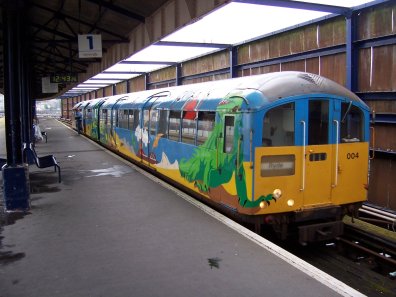The Guardian campaign has hit liftoff rather quickly with a site and blog. I wrote a response which turned in to a bit of commentary to the OSM mailing list:
FAQ entry:
‘Wouldn’t it be better to create an open-source database of geographic and other data?
Much though we admire the stoicism of the people at XXX, when you compare it to the Post Office’s thousands of postcodes – which it has to verify – and the Ordnance Survey’s billion-odd bits of data, which would cost perhaps £200m in taxes to keep updated to their present quality – that is, about £4 per taxpayer per year – you have to say that it makes more sense to free the existing data than to reinvent the wheel. It’s a very large wheel.’
This misses the point of what’s useful. We don’t have to have millions of postcodes to be useful. We don’t need to know where trees are to the milimeter to create a map that’s 99% useful. Even Ed was saying this, I think, when he was saying that what OSM is doing is not the same as what the OS is. To the best of my knowledge the OS leaves streetmap work to mastermap derivation by third parties. They do mastermap.
It also misses that OSM and FTP are collaborative efforts with social and innovative technological angles.
If the campaign is about money then as a friend said the other day, let an economist decide IP law. There is no ‘right way’ to do government IP policy. The US has public domain, we have crown copyright, others have others. public domain is not magically better, it’s worse in lots of ways than, say, viral licenses like CC. I’ll leave the BSD vs. GPL argument.
But again, some economists should decide the IP law. Not the rightsholders (the OS) or us as consumers because we’re equally biased. What’s the overall benefit to the UK economy? That’s the question.
Personally, having been involved in campaigns, I think it’s going to take *ages* to have any effect. This will stir up a hornets nest. The OS may be big and evil, but as people said on Ed’s blog (I think): the treasury isn’t going to pay for this. They’ll privatise the OS if anything. Then what? Then we’re all suddenly competing with someone who has all the data, most of the expertise, and no need to play nice. Because I think at the moment they _do_ play nice with some people, compared to their options should they be privatised.
This is not an argument that the debate is pointless or that the ‘campaign’ should not be supported, but that we should be careful what we wish for. Oh, and that we shouldn’t dismiss the people at XXX.
So personally, I’d avoid polarising this issue about public domain vs. crown copyright. My personal judgment is that I will have more effect on the availability of free mapping data by working on and promoting OSM than lobbying europarl or within Westminster.
OpenStreetMap is way bigger than me though. I could spend time lobbying. What does everyone think? Are these seperate parallel inititives or more closely intertwined?


